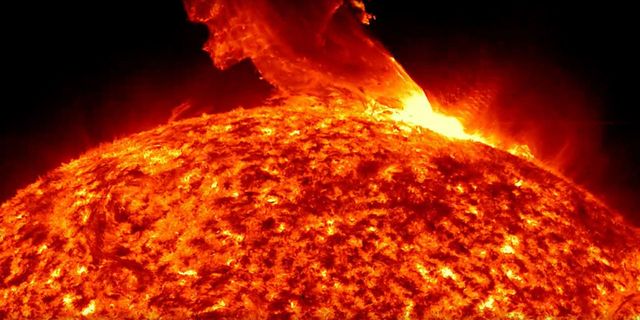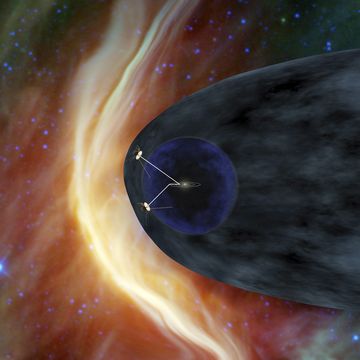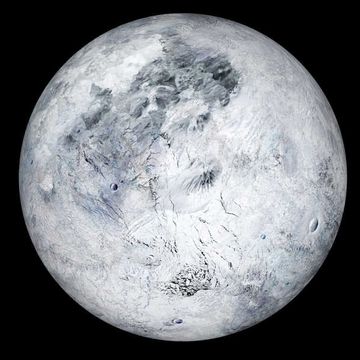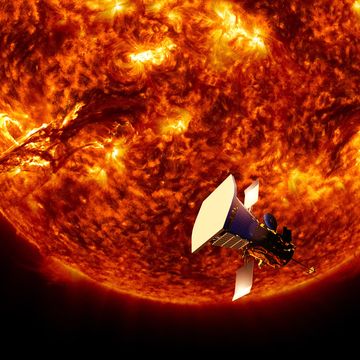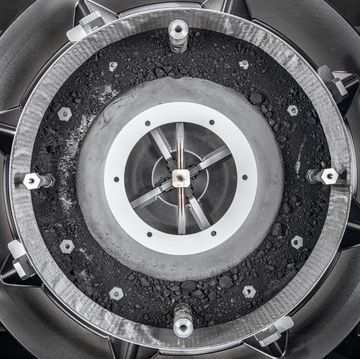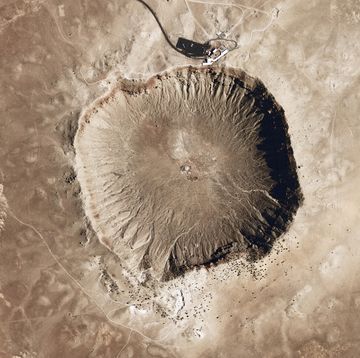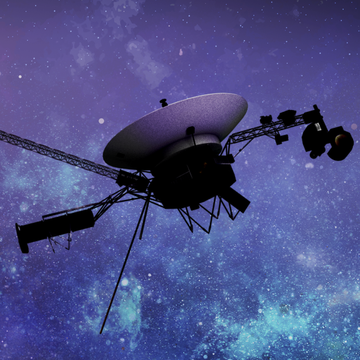Gamma rays are the most energetic waves of light on the electromagnetic spectrum. Large bursts of gamma radiation from distant galaxies can help us learn about the volatile early days of the universe. But we don't only detect gamma rays from the deep cosmos—we also detect them coming from our own sun.
The Fermi Gamma-ray Space Telescope, a joint venture between NASA, the U.S Department of Energy and international partners, has detected gamma rays issuing from the Earth-facing side of the sun. This is a somewhat curious puzzle, because the emissions are produced by streams of particles blasted out of solar flares on the far side of the sun. The findings were presented Monday at the American Physical Society meeting in Washington, D.C., and a paper on the research will be published in the Astrophysical Journal Tuesday January 31.
"Fermi is seeing gamma rays from the side of the sun we're facing, but the emission is produced by streams of particles blasted out of solar flares on the far side of the sun," said Nicola Omodei, a researcher at Stanford University in California, in a NASA press release. "These particles must travel some 300,000 miles [all the way around the sun] within about five minutes of the eruption to produce this light."
These "behind-the-limb flares" that occurred between 2013 and 2014 produced highly energetic gamma rays, some reaching as much as three billion electron volts. How the energy travels around from the far side of the sun to produce gamma rays that we can see is still somewhat of a mystery, but researchers believe that coronal mass ejections, or CMEs, could be the source.
In large enough solar flares, billion-ton clouds of superheated plasma are ejected from the surface of the sun. NASA thinks that material on the leading edge of these ejections, traveling some 5 million mph, arches around the sun along pathways that are determined by magnetic fields. When those particles slam back into the sun's surface on the side facing us, they produce the gamma-ray emissions that the Fermi space telescope detected.
Coronal mass ejections can have serious consequences on Earth. If they happen to shoot material directly at us, the high-energy particles could knock out significant portions of the power grid for days or even weeks. By continuing to study these dramatic solar explosions, hopefully we can avoid a widespread blackout down here on Earth.
Source: NASA
David Grossman is a staff writer for PopularMechanics.com. He's previously written for The Verge, Rolling Stone, The New Republic and several other publications. He's based out of Brooklyn.
